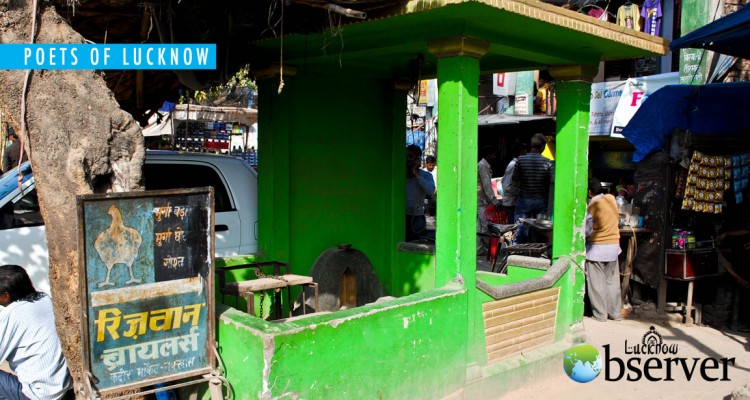Ganga – Jamuni Tehzeeb in Marsiya
“Abid Se Yeh Baatein Abhi Karti Thi Woh Dilgeer,
Jo Ahl-e Jafa Aa Gaye Karne Lage Taqreer”
Atif Hanif
Marsiya is an elegy of the dead; however it is mostly confined to the elegiac poems on the martyr of Hazrat Imam Hussain and his followers. Being an Arabic word also, the Arabic poetry has traditions of elegy and it was composed since ages. Firdausi, Saadi, Khusrau were some of initial poets who composed marsiya but it did not became prominent. It was only Lucknow, that this form of poetry reached the zenith! Before Sauda, marsiyas were written in stanza of four lines but Sauda was the first to use the musaddas (poem in six lines) which is now the standard form. It was Mir Zamir who introduced fresh metaphors, descriptions, picturesque and graphic scenes to marsiya. He invented the Sarapa (full description from head to foot). He was probably the first to write a Razmia marsiya (marsiya descriptive of battle and written in a martial vein). He recited marsiya in Tahtul-lafz, a manner much in vogue in the time of Anees and Dabeer as marsiyas were formely chanted in soz. Marsiya was usually confined to 30 or 40 stanzas but Mir Zamir was the first to extend its length to 70 or 100 stanzas. Dilgeer, Fasih, Khaliq and Zamir founded the base on which Anees and Dabeer established this master art of poetry..
“Na Jisko Deen Ki Kuch Khwaish Na Hai Kuch Kaam Duniya Se,
Tarab Hum Ko Bas Aise Hi Bashar Par Rashk Aata Hai”
Chhannu Lal Dilgeer (c 1780 – c 1848) was born during the reign of Nawab Asaf-ud Daulah. He was brother of Raja Jhaulal, so his upbringing and the surroundings were very encouraging. Mirza Khani Nawazish was his first ustad and Nasikh replaced him at later stage. Poet Mushafi appraised the poetry of Chhannu Lal and informed that he was initially poet of Ghazal and ‘Tarab’ was his takhallus. He focused on Marsiya at a later stage and he himself put his diwan of Ghazal in Moti-Jheel, Lucknow. He converted to Islam and changed his name as Ghulam Hussain. His compositions explicit the events related to the Prophet and his family. Mir Khaliq and Mirza Fasih were his contemporaries. He did not recite marsiyas as he had a defect of speech but in his compositions he showed innovations. His masnavi on Aminabad is a masterpiece ! During the reign of Ghazi-ud Din Haider, he was very popular as poet of Marsiya. Nawab Mohammad Ali Shah honoured him with four hundred rupees for a Masnavi written in praise of Hussainabad.
“Likha Yeh Misra Tareekh Yak Baar,
Sifat-e Shah Mein Hai Madah Bazar”
It was he who coined the takhallus Amanat to Agha Hussain, when his father brought him for counseling. Chhannu Lal was an expert of the language. Being proficient in both Ghazal and Marsiya, he is acclaimed by his contemporaries for his literary genius. ‘Ghabraegi Zainab’ is one of the most prominent composition by Chhannu Lal and is recited across Globe in almost every majlis and Shaam-e Ghareeba. ‘Majmua Marasi Mirza Dilgeer’, his composition had been printed by Munshi Nawel Kishore Press and is preserved in Tagore Library of Lucknow University. His residence was in Kanghi Wali Gali which is difficult to trace now. Prof Masood Hasan Rizvi praised a lot about the poetry of Dilgeer and also confirmed that he is buried near the Nakhas Chidiya Bazar.
“Akbar Hai Na Qasim Hai Na Abbas-e Dilawar,
Yeh Meri Rihaee To Hai Ab Qaid Se Badtar”
Elegy leapt into sudden popularity in Awadh under the Nawabs. Period of conventional mourning were extended from ten days to forty days. Nobles and wealthy men of Lucknow patronized this kind of composition for its sanctity and devotion. Special gatherings were convened at various places where marsiyas were chanted and people wept and mourned deeply about martyrs. It was the Golden age of marsiya. It heralds the dawn of a new era in Urdu poetry. Marsiyas transcended the artificiality and conventionality of the Lucknow School of Poetry. The marsiya, as a standard composition greatly extended the limited field of Urdu literature and is now regarded as an important weapon in the armoury of Urdu literature.
“Jis Shama Ki Ho Roshni Allah Ko Manzoor,
Hota Hai Farogh Uska Zamane Se Kahi Duur ”
Mir Hasan and his great grand father Mir Amani were marsiya writers but their marsiyas are not extant. Mir Hasan had four sons, three of whom Khulq, Khaliq and Mohsin were poets. Mir Khaliq paid the greatest attention to the elegance of idiom and beauty of diction and cared more for the pathos than for the flights of imagination. Mir Khaliq’s family was regarded as a repository of the pure idioms of the Urdu language. Mir Anees followed his father’s footsteps but amplified the theme by the introduction of episodes and exordia. In short his verses are more literary. He polished and refined the language and his compositions were remarkable for their sweetness, elegance and freshness of diction. The Urdu of Anees is regarded as most authoritative both in Lucknow and Delhi.
He supplied the epic element to Urdu literature. He was master painter of scenes from nature in all its moods. Nawab Thawar Jung of Hyderabad considered it an honour when he took the pair of shoes of Anees and placed them with his own hands in the palanquin in which Anis was sitting.
“Lashkar Me Yaan Chhe Lakh Dilawar Jawaan Hain,
Waan Eik Saf Hai Jis Mein Bahattar Jawaan Hain”
Mirza Salamat Ali Dabeer is another prominent name in marsiya. Poetry and especially the marsiya exercised great fascination for him and he became pupil of Mir Zamir, the great rival and contemporary of Mir Khaliq. He had the priviledged and honour to recite his compositions before Nawab Ghazi-ud Din Haider and Nawab Wajid Ali Shah. He was fond of dignified expressions and high sounding words. His verses were torrents rushing with rapidity, force and high sound. He paid particular attention to flights of fancy and freshness of ideas. To quickly compose as well was one of the greatest of his gifts.
“Is Qabr Ke Parde Ka Khula Haal Dabeer,
Jo Odhna Hoga Woh Bichona Hoga”
The rivalries of Mir Anees and Mirza Dabeer divided Lucknow into two camps which were respectively called Aneesia (Aneesites) and Dabeeri (Dabeerites). Poetical contests and rivalries resulted in sharpening of poetical powers. Both were contemporary, courteous and respectful to each other and seldom appeared together. Anees however was a poet by descent and received poetry as an inheritance. Dabeer had no such ‘pride of descent’. Anees paid particular attention to the refinement, the purity, sweetness, flow, aptness and elegance of diction and idiom. Dabeer devoted more care to the invention of ideas, flights of imagination, majesty and pomp of words. Eloquence is the watchword of Anees; Grandeur is the motto of Dabeer. Beside the muslim marsiya poets many non-muslim poets also contributed a lot in the form of marsiya and express their love with Hazrat Imam Hussain. Such thought is well expressed by Josh Malihabadi !
“Insaan Ko Bedaar To Ho Lene Do,
Har Qaum Pukaregi Hamare Hain Hussain”
Writer is marketing professional. Being a freelance writer, Lucknow and Urdu are his passion.

